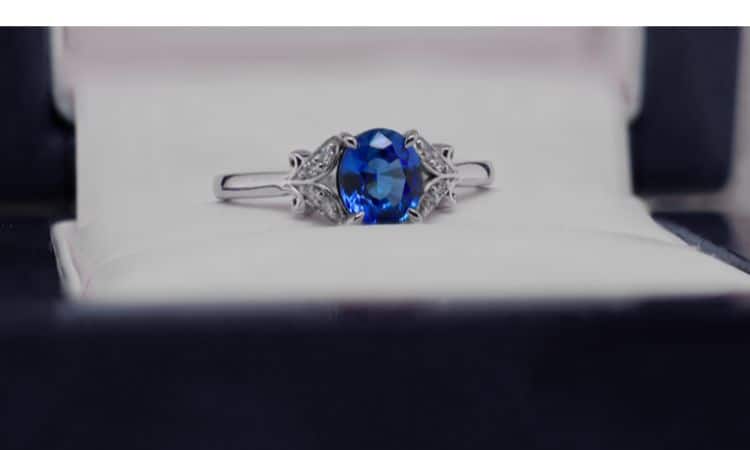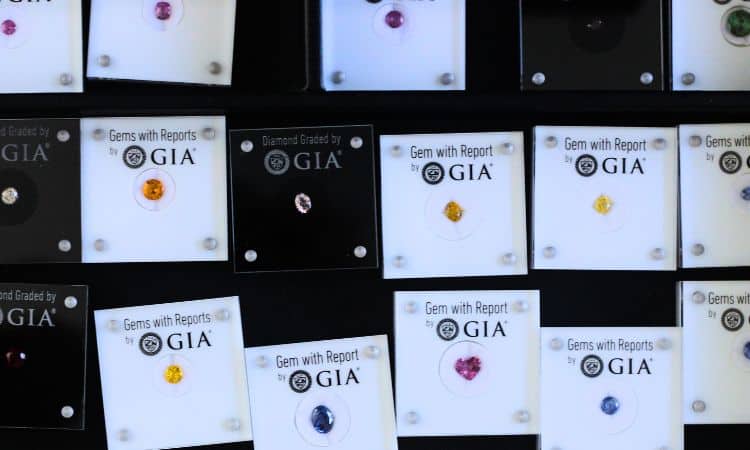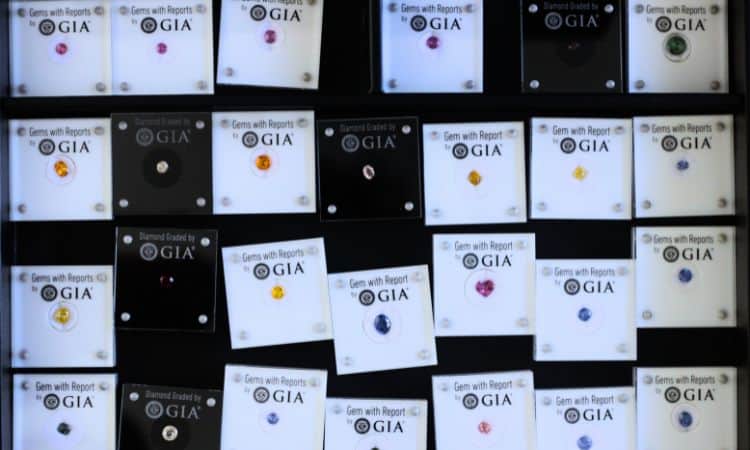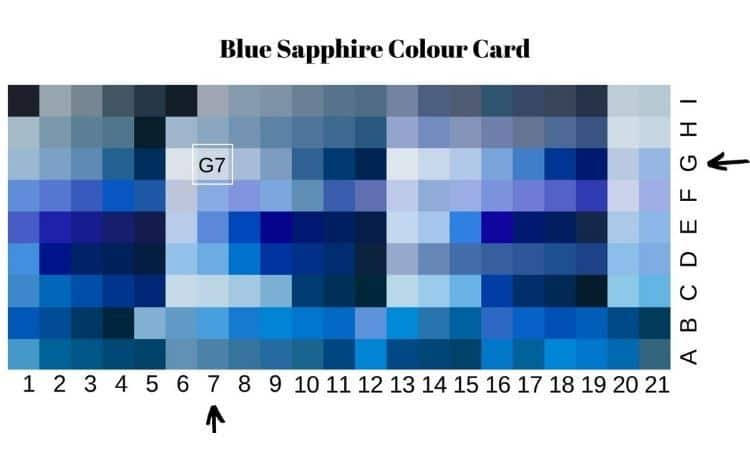Gemological Report: In-Depth Analysis of the Mohs Hardness Scale
The Mohs Hardness Scale, devised by Friedrich Mohs in 1812, is a fundamental tool in gemology and mineralogy used to assess the relative hardness of minerals and gemstones. Understanding this scale is crucial for gemologists, jewellers, and collectors, as it helps identify the durability and suitability of gemstones for various applications. In this report, we will provide an extensive analysis of the Mohs Hardness Scale, explore examples of gemstones and minerals at different levels, and delve into the underlying factors contributing to the variations in hardness.
The Mohs Hardness Scale from 1 to 10
|
Mohs Hardness |
Mineral/Gemstone |
|---|---|
|
1 |
Talc |
|
2 |
Gypsum |
|
3 |
Calcite |
|
4 |
Fluorite |
|
5 |
Apatite |
|
6 |
Orthoclase Feldspar |
|
7 |
Quartz (e.g., Amethyst, Citrine) |
|
8 |
Topaz |
|
9 |
Corundum (e.g., Ruby, Sapphire) |
|
10 |
Diamond |
This table provides an overview of the Mohs Hardness Scale, indicating the relative hardness of minerals and gemstones. Talc is the softest mineral with a hardness of 1, while diamond stands as the hardest with a rating of 10. Each mineral or gemstone on the scale can scratch the ones below it but is scratched by the ones above it. This information is crucial for identifying minerals and assessing the durability of gemstones for various applications, including jewellery and industrial use.
The Mohs Hardness Scale
The Mohs Hardness Scale is a qualitative scale that ranks minerals from 1 (the softest) to 10 (the hardest) based on their ability to scratch one another. It is a simple yet effective way to evaluate the relative hardness of minerals, and it is widely used in the field of gemology. The scale is as follows:
-
Talc: Talc is the softest mineral on the Mohs scale. It is extremely easy to scratch, making it the standard for the lowest hardness rating.
-
Gypsum: Gypsum is slightly harder than talc but is still quite soft. It is used in the production of plaster of Paris and other construction materials.
-
Calcite: Calcite is a common mineral and is harder than gypsum. It is often used in the manufacture of cement and as a building stone.
-
Fluorite: Fluorite is a colourful mineral that ranks fourth on the Mohs scale. It is commonly used in jewellery, carvings, and as a flux in the production of aluminium.
-
Apatite: Apatite is a phosphate mineral and is harder than fluorite. It is often found in gem-quality crystals used in jewellery.
-
Orthoclase Feldspar: Orthoclase feldspar is a silicate mineral and is harder than apatite. It is a common rock-forming mineral in igneous rocks like granite.
-
Quartz: Quartz is the seventh mineral on the Mohs scale and is considered a benchmark for hardness. It is widely used in the jewellery industry, especially in the form of amethyst, citrine, and smoky quartz.
-
Topaz: Topaz is a gemstone mineral and is harder than quartz. It is used extensively in jewellery, known for its beautiful colours.
-
Corundum: Corundum is the second-hardest mineral on the scale and includes gem varieties like ruby and sapphire. It is favoured for its exceptional hardness and durability.
-
Diamond: Diamond, the hardest mineral on the Mohs scale, ranks at the top with a hardness of 10. Its exceptional hardness makes it highly sought after for gemstones and industrial applications.
The Difference between Hardness and Toughness in minerals
Hardness and toughness are two distinct mechanical properties of minerals that are often used to assess their suitability for various applications in the fields of geology, gemology, and material science. These properties differ in their definitions and the aspects of a mineral's behaviour that they describe:
Hardness:
-
Definition: Hardness refers to a mineral's ability to resist scratching or abrasion when it comes into contact with another material or abrasive force. It is a measure of a mineral's surface resistance to deformation.
-
Scale: The most commonly used scale for measuring hardness is the Mohs Hardness Scale, which ranks minerals on a scale from 1 (softest) to 10 (hardest), with talc as the softest and diamond as the hardest.
-
Use: Hardness is frequently used in mineral identification and gemology. Minerals can be identified by testing their hardness using reference materials on the Mohs scale. Gemologists use hardness as one of the criteria for assessing a gemstone's durability and wearability in jewellery.
-
Example: A mineral like quartz, with a hardness of 7 on the Mohs scale, can scratch minerals with a lower hardness rating (e.g., calcite with a hardness of 3), but it can be scratched by minerals with a higher rating (e.g., corundum with a hardness of 9).
Toughness:
-
Definition: Toughness relates to a mineral's ability to absorb energy and resist fracturing or breaking when subjected to an impact or stress. It measures a mineral's resistance to breaking, shattering, or being deformed under sudden force.
-
Factors: Toughness depends on various factors, including the mineral's internal structure, the presence of fractures or cleavage planes, and the way it responds to mechanical stress.
-
Use: Toughness is essential in understanding a mineral's performance in practical applications. In fields like engineering and construction, it helps determine if a material can withstand forces without failing catastrophically.
-
Example: Some minerals, like mica, have perfect cleavage, making them vulnerable to breaking along specific planes and exhibiting low toughness. In contrast, minerals with a more irregular structure, like quartz, are tougher because they can absorb energy without shattering.
In summary, hardness and toughness are both important mechanical properties used to assess the behaviour of minerals, but they measure different aspects of a mineral's response to external forces. Hardness focuses on a mineral's resistance to scratching and abrasion, whereas toughness evaluates a mineral's ability to absorb energy and withstand impact or stress without breaking or shattering. These properties provide valuable insights into a mineral's suitability for various applications and help in mineral identification and characterization.
Factors Affecting Hardness in Minerals
The varying levels of hardness in minerals are determined by several intrinsic factors, including:
-
Chemical Composition: The specific arrangement of atoms in a mineral's crystal lattice and the strength of the chemical bonds between these atoms significantly influence hardness. Minerals with strong covalent bonds, like diamond, are extremely hard, whereas those with weaker ionic or metallic bonds tend to be softer.
-
Crystal Structure: The internal structure of a mineral plays a crucial role in its hardness. Minerals with densely packed, symmetrical crystal structures are generally harder because they can resist deformation and scratching.
-
Cleavage: Cleavage is the tendency of a mineral to break along specific planes. Minerals with perfect cleavage are usually softer because they can be easily split along these planes. For example, mica exhibits perfect basal cleavage, resulting in a low Mohs hardness.
-
Fracture: The way a mineral breaks when it doesn't exhibit cleavage also affects its overall hardness. Minerals that fracture conchoidally (in smooth, curved surfaces) are typically harder than those that fracture unevenly or irregularly.
-
Impurities: Sometimes, the presence of impurities or structural defects in a mineral's crystal lattice can affect its hardness. Pure minerals tend to be harder than those with significant impurities.
Understanding the factors contributing to varying levels of hardness in minerals is essential for gemologists and jewellers to assess the durability and suitability of gemstones for different jewellery settings and uses. It also aids in the identification of minerals in geological studies
In conclusion, the Mohs Hardness Scale is a valuable tool for evaluating the relative hardness of minerals and gemstones. It provides essential insights into their durability and application in various industries, from jewellery to construction. The scale, combined with an understanding of the underlying factors affecting hardness, is a cornerstone of gemological and mineralogical knowledge.





Comments (0)
Write your review